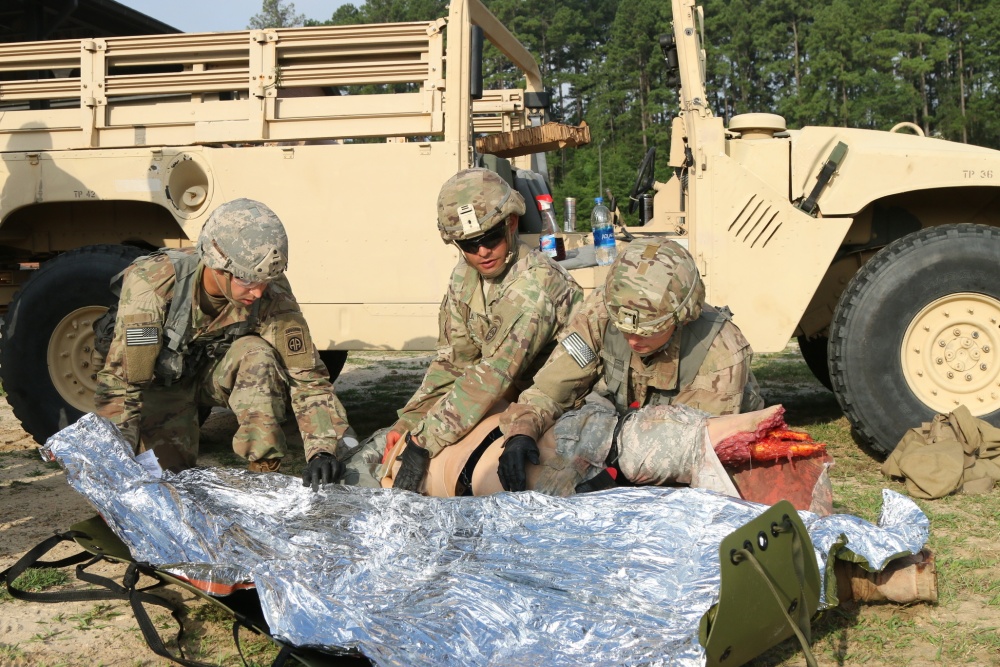U.S. Army Paratroopers train on medical kits capable of expressing pain and simulate death
Posted on
The US Army has given specific attention to a training of soldiers and in this context, all the most modern and advanced technologies are actively used to provide a more realistic training experience.
A prime example is the use of the Tactical Combat Casualty Care Exportable kit, also known as the TC3X, provides Soldiers with the ability to train in individual Warrior Skills level 1 and collective training focused toward preventable death.
The 49th Public Affairs Detachment reports that a team of consultants for the Army Training Support Center visited Fort Bragg to observe Paratroopers assigned to the 1st Brigade Combat Team, 82nd Airborne Division, as they trained on the Tactical Combat Casualty Care Exportable, or TC3X, kit, July 27, 2018.
The modern healthcare simulator was designed to provide a more realistic training experience for service members in order to perform life-saving medical care in a combat environment. The TC3X kit includes casualty simulation manikins that mimic the weight distribution of the human body and simulate breathing, bleeding, pulses, and injuries. The manikins are also capable of expressing pain and simulate death if the proper treatment isn’t administered in a timely manner.
Equipped with wireless remotes, the trainers can monitor the casualty nearby, without being in the thick of the action.
According to Sgt. 1st Class Daniel Cadnum, a Hinckley, Ohio-native and the senior medic for 1st BCT, having more Paratroopers trained on combat casualty care in a platoon or fire team provides more first responders when there’s an injury.

“When we’re deployed in an austere environment, a medic isn’t always handy right away,” he said. “We’re trying to make the training even more realistic than it already is; the more realistic it is, the better it is.”
Nineteen Paratroopers participated in the training and provided their personal feedback to the ATSC consultant team.
“We’re trying to see this device in many different scenarios used by different people,” said Danielle McGill, an engineering psychologist with the ATSC Analysis Division. “Our goal is to make the manikins as efficient as possible.”

McGill emphasized that Soldiers should have the best equipment to enhance their learning experience.
“If … the manikin is interfering with their ability to be efficient, then the service member will not retain the knowledge.”

Subscribe to our newsletter
Promotions, new products and sales. Directly to your inbox.
